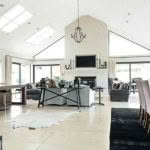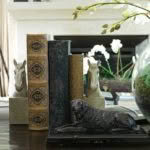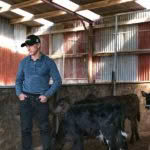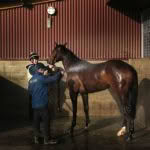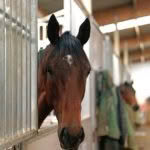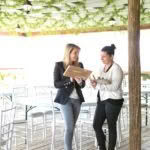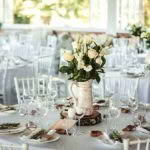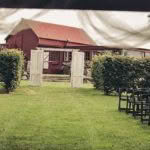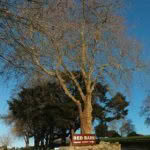Lance and Bridgette O’Sullivan talk horse racing and wedding plans
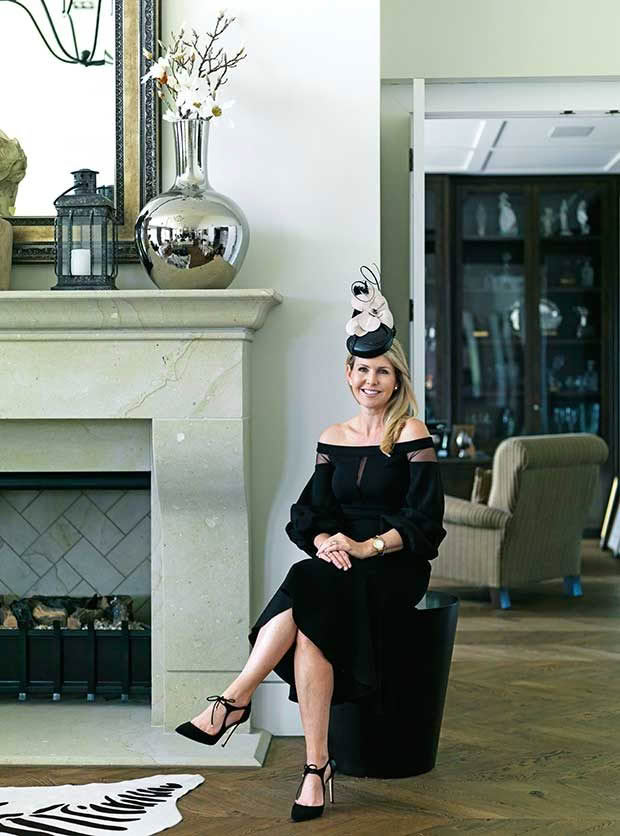
New Zealand’s Lord of the Reins, Lance O’Sullivan, and his wife Bridgette have found new passions beyond the heady days of Bollinger and BMWs.
Words: Venetia Sherson Photos: Jane Ussher
Lace O’Sullivan was 10 when he first set eyes on the property he would buy more than three decades later. He was on his way to Cambridge with his father, then one of the country’s leading thoroughbred trainers. They drove past Piarere in the Hinuera Valley near Matamata where, in ancient times, the Waikato River cut across the plains to the Hauraki Gulf. The river’s course now lies to the west, altered by the super-volcanic eruption that formed Lake Taupo more than 25,000 years ago, but its impressive legacy remains: a valley lined with towering bluffs of volcanic ignimbrite that dwarf the grazing dairy cows below.
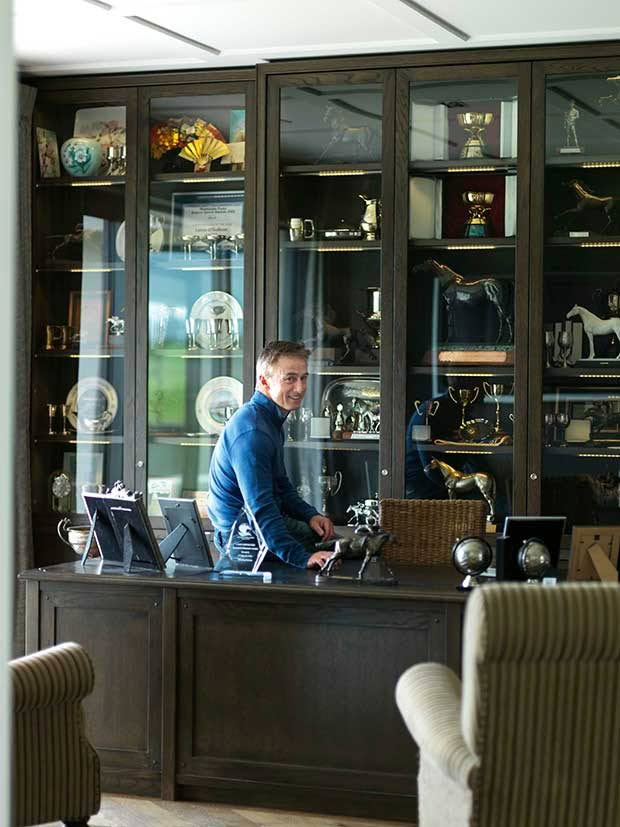
The grandeur of the stone cliffs entranced Lance (as it did Peter Jackson when he later chose the valley as the site for Hobbiton), but he was also captured by the beauty of a property reached by a long and grand steep driveway, fringed with cottonwoods. “I thought, ‘I’ll own that farm one day.’”
He had a similarly prophetic moment when he met his wife, Bridgette. It was 1990, and they were both at a race meeting at Te Rapa Racecourse in Hamilton. Lance, then 27, was on his way to becoming New Zealand’s top jockey, and trainers were clamouring to have him wear their colours.
On this day, he’d ridden several winners and as he was leaving the track he caught sight of a beautiful young blonde woman dancing alone on the grass beyond the birdcage. He was entranced. She explained she was a ballroom dancer, practising for a competition while she waited for her stepfather. Lance laughed, but he told his brother later that day that he had met his future wife. She was just 16.
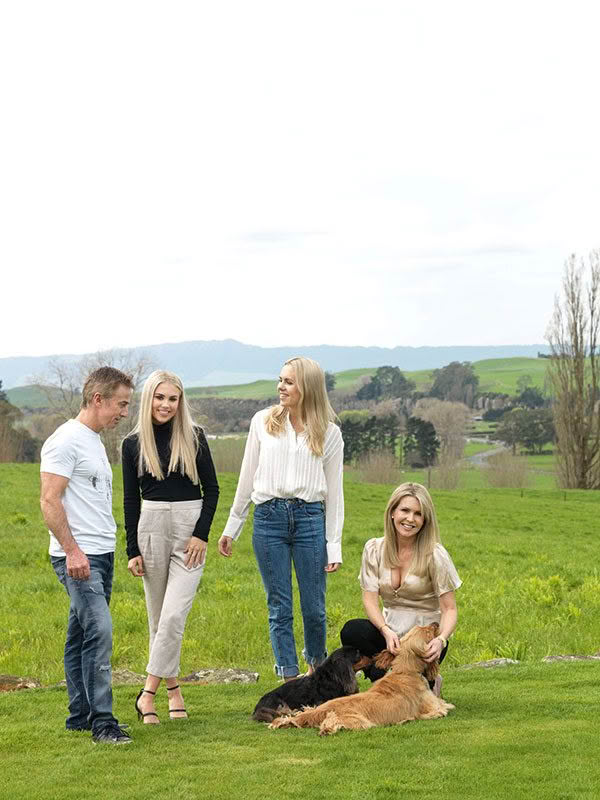
A few weeks after that meeting, the pair met again at a breeders’ award dinner. Bridgette says he gave her the glad eye. His version is she stalked him. They danced to the Blues Brothers and romance bloomed. But, while her family may have been impressed by Lance’s credentials at the racetrack, they were concerned Bridgette was still young and hadn’t seen the world. After she completed a two-year diploma in accounting, they organized a job for her with an electrical engineering company in Hong Kong. Coincidentally, Lance secured a contract to ride in the former British colony. They married in 1995.
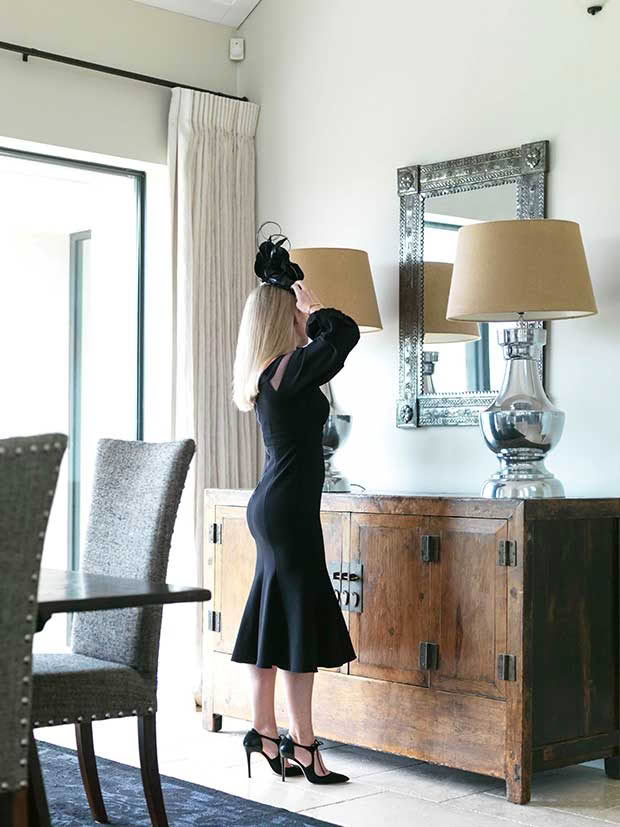
Bridgette’s passion for fashion came from her fur-wearing, elegant grandmother. She prefers simple style to frills, but she is partial to her Jimmy Choo stilettos.
Twelve years and two children later, Lance’s second premonition came to pass. The couple bought the farm he had fallen in love with as a boy. The property, named Rockspring, sits high above the valley with 360-degree views, including the mauve-tinted Kaimai Ranges to the east and the wildlife sanctuary Maungatautari Mountain to the west. Hobbiton, a place of pilgrimage for hundreds of thousands of Tolkien fans each year, lies just beyond a hill.
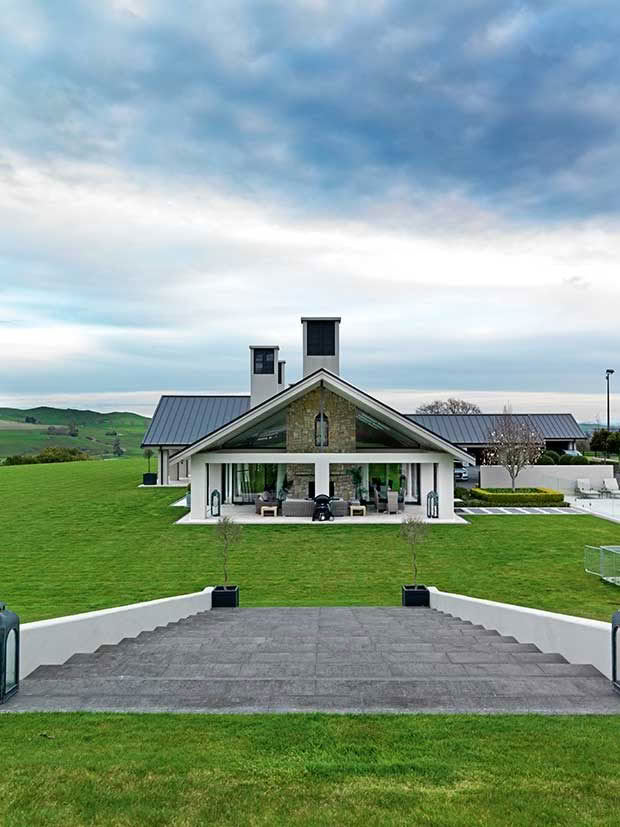
The 200-hectare property is a dairy farm with 550 cows, milked by farm managers. When Lance and Bridgette bought it, the original homestead had long gone, but there was a century-old red barn that once served as a livery for stagecoaches, a heritage-listed school (no longer in use), plus wide-girthed oaks planted by early settlers and kahikatea trees. There was also a splendid expanse of prime pasture. Piarere sits plum centre between Cambridge and Matamata, New Zealand’s equivalent of Kentucky, where thoroughbred champions are bred and raised to run. In this part of the country, Lance O’Sullivan’s name is still said with reverence, even though he retired from riding winners 16 years ago.
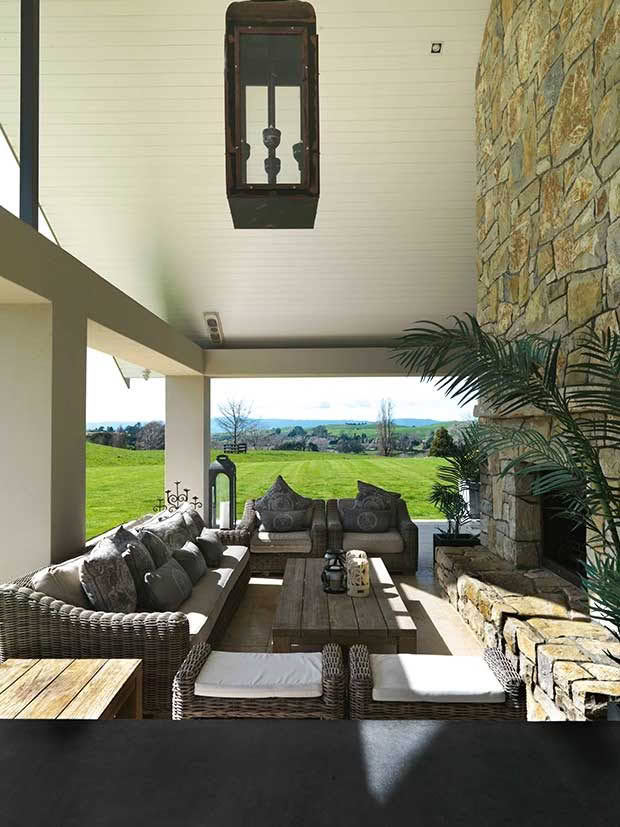
Bridgette says that without a main house (there were two farmhouses on the property), it was a blank canvas. Their architect drew up plans for a beautiful south-facing hilltop home, but when she was away one weekend, Lance phoned to say, “We’ve turned the house around.” What he meant was that they had worked out a way for the house to face north by recontouring a large part of the hill beneath it.
Not surprisingly, there are many horse-inspired objects in the O’Sullivan home — equine sculptures and paintings, plus pictures of Lance at the peak of his career. One room is taken up with trophies won in New Zealand and international race meetings. Another is filled with ribbons won by the couple’s daughters when they rode ponies. The hilltop house mirrors the grand scale and colours of the valley below, where massive rocky bluffs trace the former path of the Waikato River. There are wide windows, wide corridors and tall doorways.
Bridgette says Lance is impetuous and persistent. “I’m a big picture person. I like to plan. Lance likes to jump in and do stuff.” Like the time he and a couple of mates knocked down the wall of the red barn after a chance remark by a guest that it would be an excellent place for weddings.
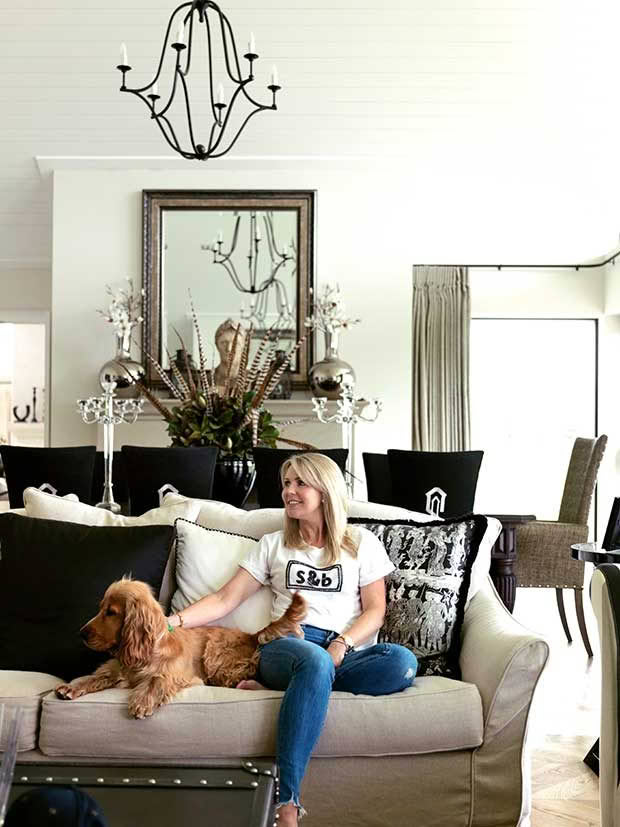
A striking aspect of the house, in addition to its elevation, is the size of the doors through which even basketball export Steven Adams would not have to stoop. “It’s in case we grow,” says Lance, who is jockey-sized and still weighs 55 kilogrammes – little more than his riding weight. Bridgette, also petite even in her highest Jimmy Choo stilettos, says he often forgets to eat. The main hallway is wide and paved with Italian limestone tiles. That’s not pretentious, but practical.
Two dogs have the run of the place, and they have scratchy toenails. One of them, an exuberant golden cocker spaniel pup named Freddie, arrived three months ago and has still to win over Austin, a stately long-haired dachshund who has been a pet for 13 years. Austin went into a steep decline last year when his former companion, Jack, a labrador, died. Freddie was bought to cheer him up. “They’re getting better with each other,” Bridgette says.

Racing consumed the couple for more than two decades of their married life. When Lance was at his peak, they were at a racetrack somewhere in the world most weeks. In 2005, Bridgette, who also has a racing pedigree (her grandfather was a bookmaker and her stepfather a trainer) was appointed an ambassador for Ellerslie Racecourse, a role she held for five years. She says it involved talking up the industry which, by then, was in decline. Her wardrobe, unsurprisingly, is still filled with elegant race-day dresses (“no special labels”) and hats, 80 pairs of shoes (“Lance counted them once”) and Gucci and Chanel bags, which are her weakness. For Auckland Cup week alone, she needed five outfits. But she’s just as happy in ripped jeans and a sweater.
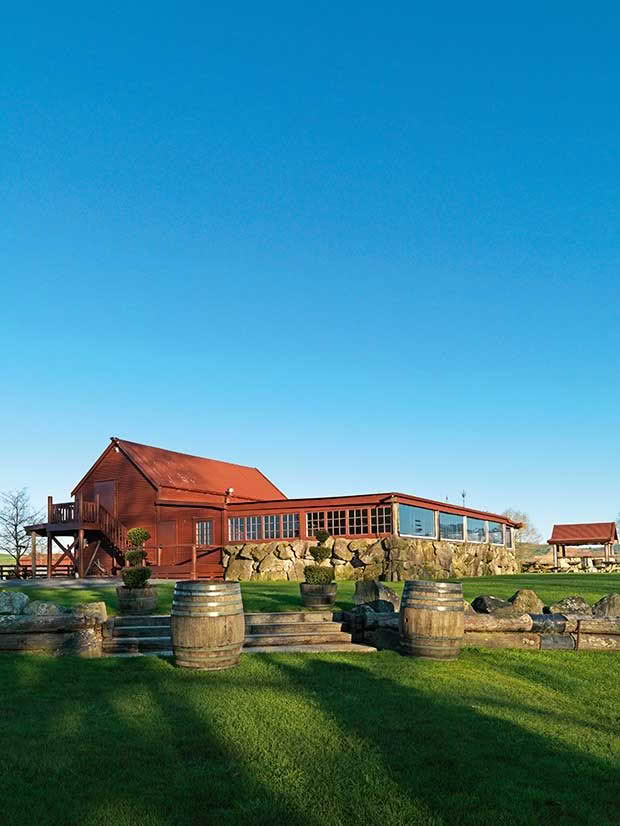
Her life now is entirely focused on the Red Barn wedding and function centre, which she and Lance began 10 years ago. The former livery where stagecoach drivers changed sweat-drenched horses for fresh steeds, has been given a modern makeover, but the original building is its heart. Bridgette has always enjoyed throwing parties and having guests to stay. The idea of hosting weddings appealed. “I love seeing people have a good time. It seemed like a good fit.” There were 71 weddings last year, plus other events, which means her pace of life is hectic. If a staff member falls ill, she is happy to step in.

The couple’s two daughters, Georgia, 20, and Caitlin, 22, who are at Victoria and Waikato Universities respectively, also work at the venue during the holidays. The sisters love the racing industry, and Caitlin helps out with social media at Wexford Stables. Both are petite like their parents, and they were skilled riders when they were younger. Would the girls have ever considered being jockeys? “Not negotiable,” says Lance. “I don’t dislike my kids that much to let them do it.” What he means is, the life is tough, and the rewards these days aren’t great.
It is said that top jockeys are born to ride, which gives them an edge over the thousands of journeymen who never make the premium grade. Lance had the pedigree, even before he rode his first pony. But his father discouraged him from hanging around the stables, probably because he knew the life was tough. “The family was pretty poor back then,” Lance says. “There were four kids under five. I remember a wheel once falling off the family car.”
He originally wanted to become a lawyer (“they had sports cars and good-looking girlfriends”), but once he started to work for his father, he was hooked. When he told his mother, Marie, who died in 2015, that he wanted to be a jockey she said: “I don’t mind if you are a garbage collector as long as you are the best you can be.” He didn’t let her down.
His track record is impressive even by international standards. It includes 12 premierships and 2478 wins over his 23-year career. In 1989, he won the famed Japan Cup in world-record time on Horlicks, still one of his favourite mounts, along with Mr Tiz, the only horse to have three consecutive wins in the Railway Stakes, the country’s premier sprint race for thoroughbreds. He says some horses stand out.
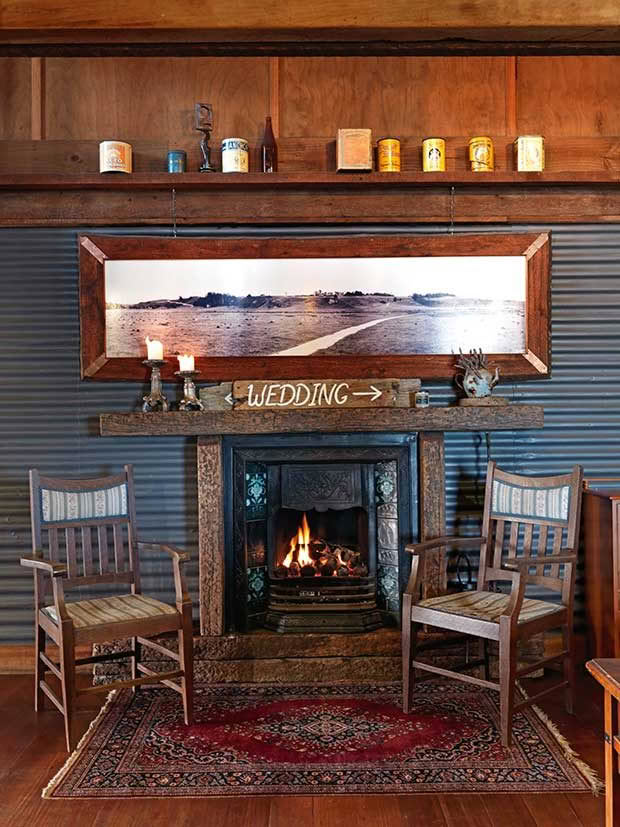
Something old, something new. The Red Barn, where stage-coach drivers once rested their sweat-drenched hoses, is now the venue for more than 70 weddings a year.
“They are old warriors. If you go to war, you want to be on one of them.” For two decades, he was the country’s leading rider; no one has come close. When he retired, aged 39, he said there was nothing else to prove. He puts his success down to resilience and the ability to perform under pressure. “You have to be mentally tough. You also have to be a bit of a mongrel. Good guys never win.”
He used to have a bumper sticker saying, “It doesn’t matter if you win or lose… until you lose.” During one race, when he dropped his stick (whip), he snatched another jockey’s. “It was never picked up. Back then other jockeys would never tell tales on each other.” But he has another side that has contributed to his success. “I love horses and have huge respect for them. A horse has to know you before it gives its best. I’d always take the time to pat them before I got into the saddle. Many jockeys don’t do that.”
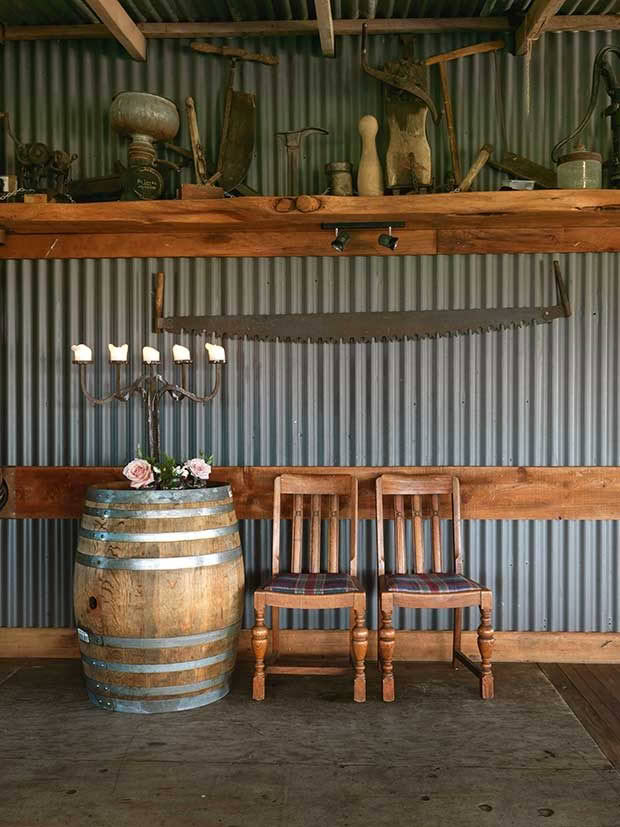
Memorabilia from colonial farming days rubs shoulders with an ultra-modern catering kitchen. The wedding business was started 10 years ago, when the couple’s daughters were at school, and Bridgette was an ambassador for Ellerslie Racecourse. “We didn’t get much sleep, she says.”
Today, he still rises at 3.40am (“It used to be 3.35am, but I give myself a lie-in these days”) and heads to the stables and racetrack 10 minutes down the road where he watches ambitious young apprentices put horses through their paces. But, at 55, he’s looking to the future when he can spend more time working on the property. He inherited his mother’s love of gardening and sees his role as a caretaker of the land for future generations.
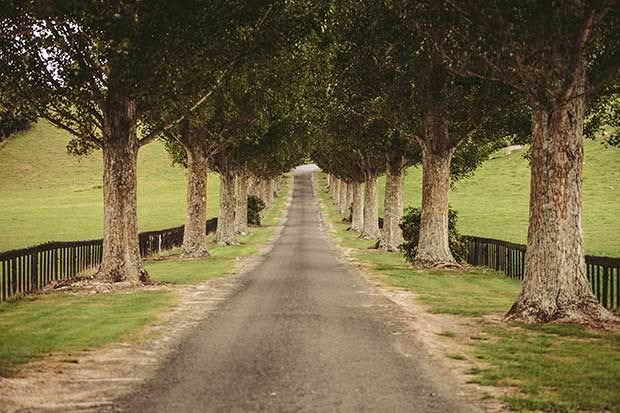
In 1986, when he bought his first property, there was a single “dirty old pine” on a hill. He thought, “how can I improve this? So he began planting trees. He’s now planted more than 12,000 on properties he’s owned, including english oaks, dawn redwoods, kauri and kahikatea. At Rockspring, some trees are 600 years old. “I’d like to be remembered as the old guy who planted trees.” He’s also brought back bird life by declaring war on rats and possums. “When we bought this place there was no bird life. There was a beautiful stand of kahikatea, but it was deathly silent.” Recently he spotted seven kereru (wood pigeons) in a single tree.
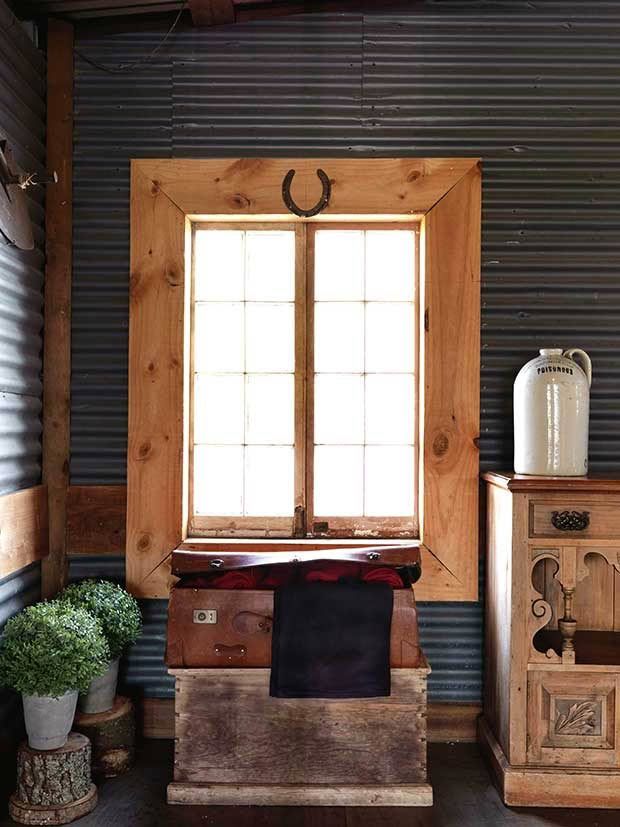
Bridgette and Lance look back on their early days of racing with affection, but not nostalgia. In the golden days, when the industry dripped with high stakes, Bollinger and BMWs, they were the perfect figureheads: he, New Zealand’s Lord of the Reins; she, the sport’s glamorous ambassador. She still remembers winning her first Fashion in the Field in an outfit she designed herself made from a Versace fabric. “I wore a hat that had a sort of antennae at the front.”
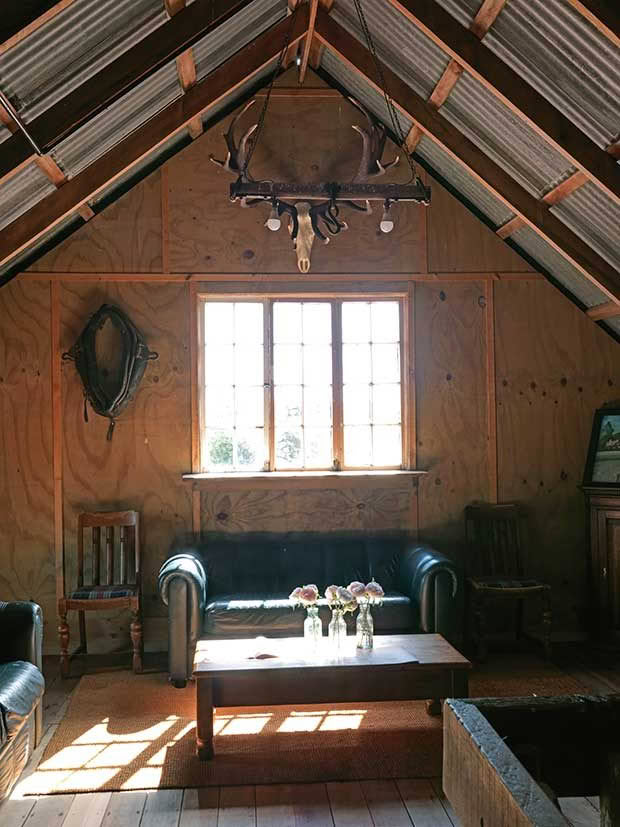
But they don’t crave the limelight or flaunt their success. There is no helicopter parked on the lawn that stretches to a ha-ha with vast views of the valley. Bridgette once took part in something called Celebrity Wives, which she says was embarrassing. In 2005, she and Lance won Treasure Island: Couples at War. (Bridgette says they won because Lance is competitive; he says it was because Bridgette could hang upside down on a trapeze and remember hieroglyphics.) Lance was also asked to do Dancing With the Stars, which he turned down. “We live pretty disciplined lives,” Bridgette says.
She says when he decided to quit riding, she was pleased. She worried dreadfully about injuries, especially if she wasn’t at the track to see him ride. When 500 kilogrammes of horseflesh stumbles and falls, the jockey rarely walks away unhurt. Lance has broken almost every bone in his body, including his femur.
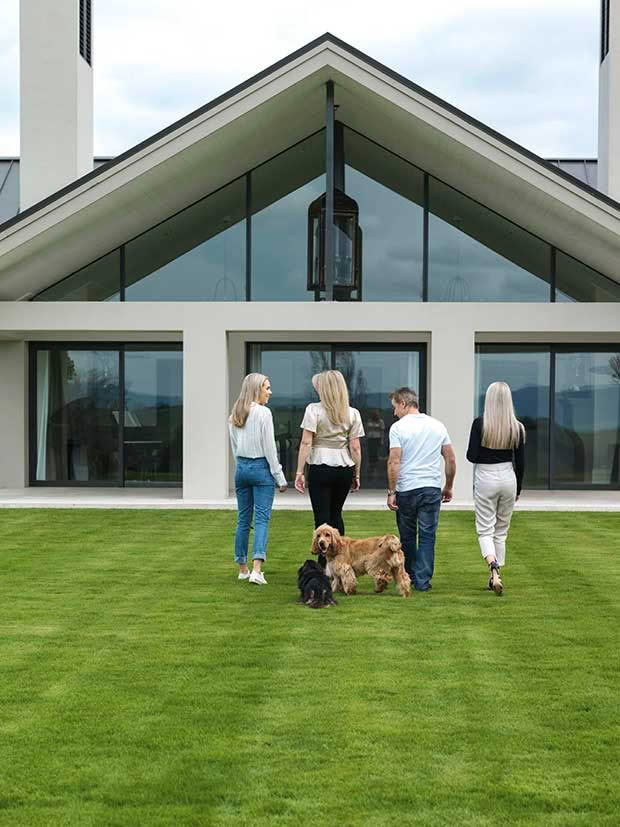
But she loved the loved excitement of the winner’s circle. The day before the interview, she turned 44. She and Lance went to the annual racing awards where Charles Road, a five-year-old bay gelding trained at Wexford Stables, won Stayer of the Year. She says: “The thrill never disappears.”
MR AND MRS RACING: THE O’SULLIVAN FILE
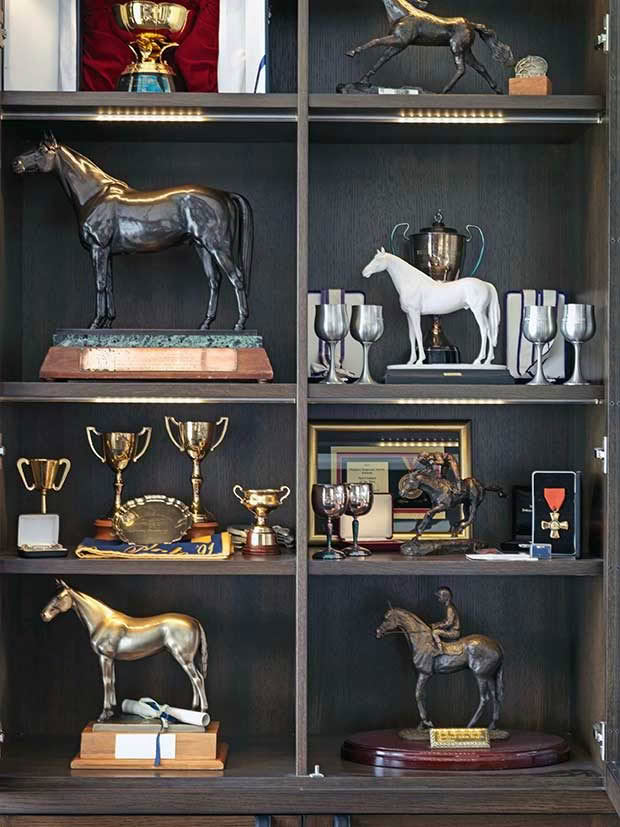
Where it started: Twenty-eight years ago when he saw her practising waltz steps at the race course.
She says: “He laughed, but he told his brother he would marry me some day.”
He says: “I thought it was funny seeing her dance. I also thought she was different from other girls I had dated.”
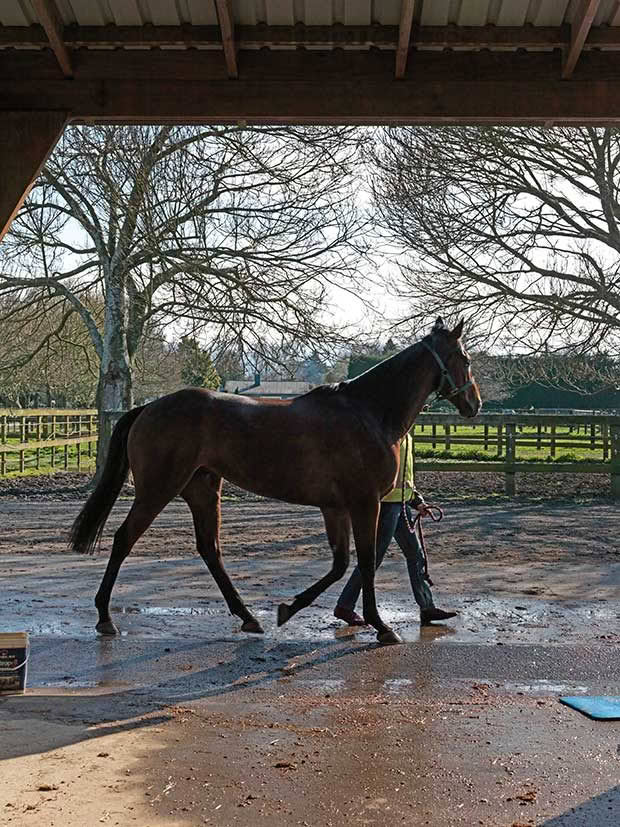
High times: In 2006, Lance was part of the inaugural class inducted into the Racing Hall of Fame. Bridgette was the ambassador for Ellerslie Racecourse. Lance was later also inducted into thE Sports Hall of Fame, and in 2002 was awarded an ONZM for services to thoroughbred racing.
Tough times: In a fall at Moonee Valley in Australia, Lance broke his femur. He was told he would never ride again and would walk with a limp. Bridgette was pregnant with their second daughter. He was back in the saddle within 18 months.
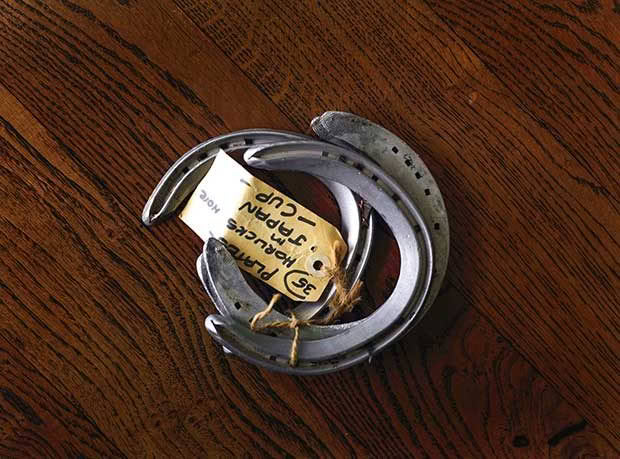
Little known facts: He played junior rugby at Matamata College for three years because he could never pass the grade weight. She has a photographic memory, which helped them win Treasure Island: Couples at War in 2005.
Lance’s thoughts on the racing industry: “It’s not the same today. Top horses and jockeys are heading overseas. Today 60 per cent of horses racing in Hong Kong are New-Zealand bred, but in the top tier, only 10 per cent are from New Zealand. However, I’m an optimist. If the industry does everything recommended in the report by Australian racing expert John Messara, things could be turned around.”
BRIDGETTE’S TIPS FOR HOSTING A WEDDING
• The success is in the detail. Every aspect has to be thought through.
• Try not to say “no” to anything. It’s their special day. We once had a Ferris wheel on site.
• Mitigate against anything that could go wrong. If there is a power cut, I have a generator on hand.
• Fireworks are wonderful, but in summer on a farm, it’s too risky.
• Flying lanterns look beautiful, but if they all end up on your neighbour’s property, you need to re-think.
• Most memorable wedding: A bride who was a wonderful singer arranged to have a white grand piano near where they took their vows. After she walked down the aisle, she played the love song A Thousand Years. It was amazing. I still have it on my phone.
Love this story? Subscribe now!
 This article first appeared in NZ Life & Leisure Magazine.
This article first appeared in NZ Life & Leisure Magazine.
